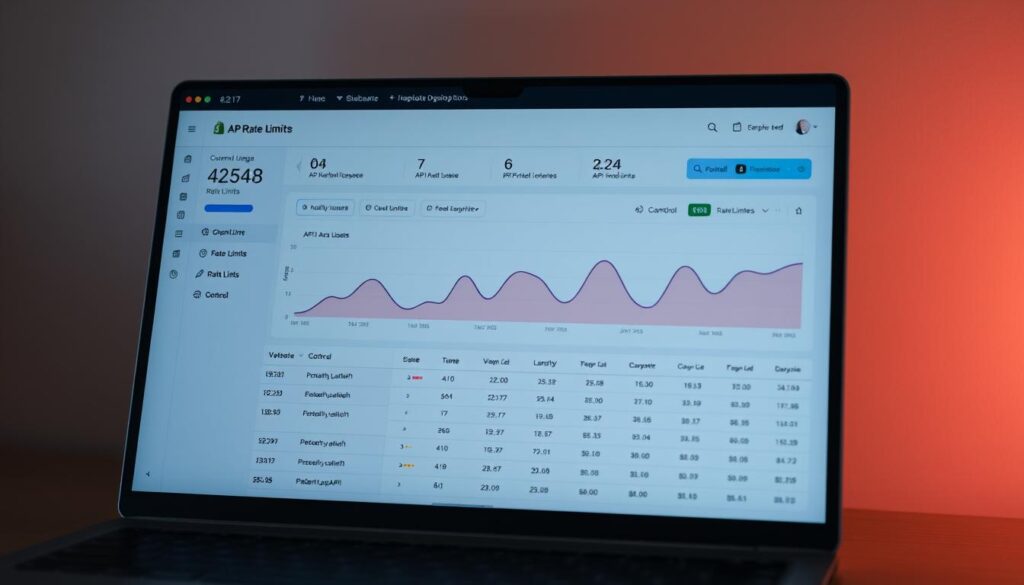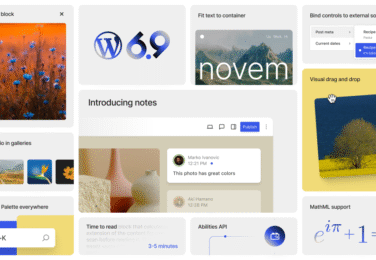How to utilise Shopify APIs

Table of Content
Australian e-commerce businesses using Shopify APIs see up to 40% faster order processing. They also cut down manual data entry errors by 35%. Yet, many business owners in Melbourne, Sydney, and Brisbane don’t know these powerful tools are available to them.
Businesses have changed how they work with smart API integration. These aren’t just technical tools. They’re real business helpers that give you advantages you might not have thought of.
What surprises many of our clients is this: shopify apis aren’t just for big companies. Small and medium-sized businesses in Perth and Adelaide are also using them to make their operations smoother and improve customer experiences.
We help bridge the gap between technical skills and business success. Whether you’re handling inventory across different channels or creating unique customer experiences, we’ll show you how to get real results. We do this without making things too complicated.
Key Takeaways
- Shopify APIs can reduce manual data processing by up to 35%, saving valuable time and reducing costly errors
- Businesses of all sizes across Australia are successfully implementing API integrations without enterprise-level budgets
- These ecommerce development tools enable seamless multi-channel inventory management and automated workflows
- API integration delivers measurable competitive advantages through enhanced customer experiences and operational efficiency
- Technical complexity shouldn’t be a barrier—the right guidance makes API utilisation accessible for any business
- Real-world Australian case studies demonstrate practical applications across Melbourne, Sydney, Brisbane, Perth, and Adelaide
Transforming Australian E-Commerce with Shopify APIs
Australian digital commerce is changing fast, thanks to shopify apis. These tools let retailers of all sizes customise and control their stores. It’s not just about looks; it’s about running businesses better.
API technology is key for managing inventory, orders, and customer experiences. API-driven commerce lets Australian retailers build what their customers need, not the other way around.
This change is big for Australian businesses. They need to integrate systems smoothly to survive, not just grow.
The API Revolution in Online Retail
The retail tech world has changed a lot in the last decade. What was once rigid has become flexible, with APIs making different systems talk to each other easily.
Think of APIs as translators for software. They let your Shopify store talk to your accounting and other systems. This means no more manual data entry and fewer mistakes.
Rest api integration has made top tech available to small Australian retailers. They can use systems once only for big companies. The REST API is simple and widely used, making it a key part of e-commerce.
This tech has grown from a developer’s tool to a business asset. The API-first approach lets businesses start small and grow without big changes.
APIs make it easy to mix and match different systems. Retailers can pick the best tools for each job and connect them all. This flexibility is huge.
Why Australian Businesses Are Embracing API Integration
Australian retailers face unique challenges. API technology helps them stay efficient and competitive. It’s not just about surviving; it’s about thriving.
The distance in Australia affects commerce in ways others don’t. Managing inventory and shipping across the country needs fast, accurate systems. Shopify apis make this possible.
Australian shoppers are among the most tech-savvy. They expect a seamless shopping experience, no matter where they are. API integration makes this possible.
International competition is fierce. Australian businesses can’t just compete on price. They need to offer better experiences. API integration helps them do this by giving them the same tech as global rivals.
APIs make businesses more efficient. They can cut manual data entry by up to 90%. This means staff can focus on customers and strategy.
APIs are a smart investment. They may cost upfront, but they pay off quickly. Businesses see big savings and improvements in customer satisfaction.
Business owners might feel unsure about APIs. But working with experienced developers makes it easy. It’s a game-changer.
APIs change how businesses work. Here’s how:
| Business Aspect | Traditional E-Commerce | API-Driven Commerce | Business Impact |
|---|---|---|---|
| Inventory Management | Manual updates across platforms | Real-time synchronisation | Eliminated overselling, reduced stockouts |
| Order Processing | Copy data between systems | Automatic order routing | 80% faster fulfilment times |
| Customer Data | Siloed in separate systems | Unified customer profiles | Personalised experiences, higher conversion |
| Reporting | Manual data compilation | Real-time dashboards | Faster decisions, improved outcomes |
| System Scalability | Platform migrations required | Add capabilities progressively | Lower costs, reduced disruption |
Australian businesses using APIs are building for the future. They can adapt quickly and offer better experiences. This is a big advantage in today’s market.
APIs have changed how businesses operate. They remove limits on growth and innovation. For Australian retailers, API integration is key to success in the digital age.
Understanding Shopify APIs: A Complete Overview
Before we dive into API implementation, let’s clear up what these tools do for your business. Shopify APIs act as bridges, connecting your online store with other systems, apps, and workflows. They’re not just tech terms; they solve real business problems.
We’ve helped many Australian businesses navigate the API world. The key is knowing which tools fit your needs. Once you understand the basics, making strategic choices becomes easier.
The Four Core API Types Explained
Shopify has four main API types, each for different business needs. Let’s explain them simply.
The Admin REST API is your workhorse. It handles basic operations like managing products, orders, and customer info. REST APIs use predictable web addresses for actions.
Australian retailers often choose REST for simple integrations. It’s reliable and well-documented. For syncing inventory with your warehouse, REST is efficient.
The Admin GraphQL API is the modern way to get data. Unlike REST, GraphQL lets you ask for exactly what you need in one query. This reduces data transfer and boosts app performance.
Use GraphQL for complex apps that need data from various sources. A single query can get product details, inventory, customer info, and order history all at once.
The Storefront API powers experiences beyond the standard Shopify theme. It’s for custom mobile apps, progressive web apps, and headless commerce. It gives customers the data they need without exposing admin functions.
Brisbane businesses building mobile apps rely on the Storefront API. It keeps things secure while allowing for unique shopping experiences that match your brand.
Webhooks work differently. They send notifications to your systems when certain events happen. When a customer places an order or updates their address, webhooks notify your connected systems instantly.
This approach enables real-time automation. Your fulfilment system gets order notifications right away. Your CRM updates customer records automatically. Your analytics platform gets data without delay.
Choosing the Right API for Your Business Needs
Picking the right API depends on your business goals. We’ve developed a framework to help you decide.
Ask yourself these strategic questions:
- Are you building internal tools for staff, or customer-facing applications?
- Do you need real-time notifications, or scheduled data synchronisation?
- Will you request the same data repeatedly, or varied information based on context?
- Are you integrating with back-office systems or creating new shopping experiences?
For internal automation and back-office integration, the Admin APIs are your go-to. Choose REST for straightforward operations and established patterns. Select graphql shopify for efficient data retrieval across complex relationships.
For custom customer experiences, the Storefront API is your best bet. It provides secure access to product catalogs and checkout functionality. It’s key for mobile apps, voice commerce, and headless architectures.
For real-time workflow automation, webhooks are the way to go. They deliver immediate notifications that trigger connected processes. They’re great for order fulfilment, inventory management, customer service workflows, and analytics tracking.
| Business Scenario | Recommended API | Primary Benefit |
|---|---|---|
| Inventory synchronisation with warehouse system | Admin REST API | Reliable, straightforward integration |
| Custom mobile shopping application | Storefront API | Secure customer-facing data access |
| Complex dashboard pulling multiple data sources | Admin GraphQL API | Efficient single-query data retrieval |
| Automated order processing workflow | Webhooks | Real-time event notifications |
Many advanced implementations use multiple API types. A custom mobile app might use the Storefront API for shopping and webhooks for personalised push notifications based on order status.
Technical Prerequisites for API Implementation
Let’s talk about the technical needs honestly. Working with ecommerce tools requires specific skills, but Australian businesses have many ways to succeed.
Development Expertise: You need programmers familiar with web tech, authentication, and API best practices. This expertise can come from in-house teams, freelancers, or agencies like ours.
You don’t need to understand the code yourself. You just need to know the business goals and work with technical partners who can turn those goals into solutions.
Shopify Plan Requirements: Basic API access is available on all Shopify plans. But, some advanced features, like API rate limits and certain webhook events, need Shopify Plus. We help businesses decide if upgrading is worth it based on their integration needs.
Secure Infrastructure: Webhook implementations need secure endpoints. You’ll need reliable hosting that keeps uptime and protects data. Cloud platforms like AWS, Google Cloud, or Azure offer the right infrastructure at good prices.
Authentication Understanding: Shopify APIs use OAuth for secure authentication. This might sound complex, but it’s just a secure handshake that verifies your app’s identity. Developers handle the tech, and you just need to understand the security aspects.
Testing Environments: Professional implementations need development stores for testing. Shopify offers free development stores for this purpose.
We know these technical needs might seem overwhelming. That’s why we’re here—to handle the complexity while keeping you informed and in control. Our approach ensures you understand the business implications without needing to master the technical details.
Australian businesses working with experienced developers get all the benefits of custom API integration without building internal tech teams. We translate your business needs into technical specs, implement solutions, and provide ongoing support as your needs change.
The question isn’t whether your team can learn API development from scratch. The question is whether investing in custom integration delivers enough business value. For most growing e-commerce operations, the answer is yes. Partnering with specialists makes the journey more efficient than going it alone.
Case Study: Melbourne Fashion Retailer’s REST API Integration
A Melbourne fashion retailer moved from inventory chaos to smooth operations with Shopify APIs. They had four sales channels: a Shopify store, a Melbourne boutique, a Chadstone pop-up, and partnerships. Manual processes couldn’t handle this complexity.
We helped this retailer improve their operations with rest api integration. Their success shows how tech solutions help Australian fashion businesses.
The Business Challenge: Multi-Channel Inventory Chaos
The retailer faced big problems that threatened their growth. Inventory discrepancies caused regular overselling incidents, damaging customer relationships and brand reputation. Staff spent twelve hours weekly updating spreadsheets manually across all sales channels.
The problems went beyond just inconvenience. Customers saw products listed as available on the Shopify store, only to receive cancellation emails after purchase. The boutique staff couldn’t access real-time stock information, leading to frustrated customers and lost sales opportunities.
Financial impacts mounted quickly:
- Lost sales from stockouts averaged $8,400 monthly
- Customer service overhead increased by 40% handling inventory-related enquiries
- Staff morale declined as manual reconciliation consumed productive time
- Brand reputation suffered from repeated customer disappointments
- Expansion opportunities were blocked by operational constraints
The retailer needed a solution that could unify inventory visibility across all channels without requiring staff to master complex technical systems. Manual processes simply couldn’t scale with their ambitions.
REST API Implementation Strategy
The development team designed a central inventory management system that communicated directly with Shopify through rest api integration. This architecture enabled automated stock synchronisation every fifteen minutes across all sales channels without manual intervention.
The technical solution leveraged Shopify APIs to create bidirectional data flow. The system pulled order data from Shopify, captured in-store sales through the POS system, and pushed updated inventory quantities back to the online store. We implemented REST API endpoints for product inventory updates, order retrieval, and location-based stock management.
The phased rollout approach minimised risk while building confidence:
- Week 1-2: Connected one product category (women’s tops) for testing
- Week 3-4: Validated inventory accuracy against manual counts
- Week 5-6: Expanded to three additional categories
- Week 7-8: Rolled out across complete product catalogue
- Week 9-10: Integrated physical locations and retail partners
The development team built error handling mechanisms to manage API rate limits and network connectivity issues. Automated alerts notified staff of any synchronisation failures requiring attention. This robust architecture ensured reliability even during peak trading periods like end-of-season sales.
Measurable Results and Business Impact
The transformation delivered quantifiable improvements across every operational metric. We tracked performance for six months following the complete rollout to validate the return on investment for this Shopify APIs implementation.
Inventory Synchronisation Outcomes
Inventory accuracy improved dramatically from the baseline 73% to an impressive 98.5%. Stock-out situations decreased by 84%, virtually eliminating the overselling incidents that had plagued customer relationships. Manual inventory management time dropped from twelve hours weekly to just 45 minutes for exception handling.
The system processed over 2,400 inventory updates daily across all channels. Staff could focus on customer engagement instead of spreadsheet maintenance. Real-time visibility enabled proactive decision-making about product ordering and allocation between locations.
Order Processing Improvements
Order processing efficiency transformed the customer experience significantly. Processing time decreased by 62%, enabling same-day dispatch for orders received before 2pm Melbourne time. This speed improvement directly contributed to a 34% increase in customer satisfaction scores measured through post-purchase surveys.
Customer service enquiries about order status dropped by 28%. The automated system sent accurate tracking information and inventory availability updates without staff intervention. Returns due to inventory errors fell by 91%, reducing both costs and customer frustration.
| Performance Metric | Before REST API Integration | After Implementation | Improvement |
|---|---|---|---|
| Inventory Accuracy | 73% | 98.5% | +25.5 percentage points |
| Weekly Manual Updates | 12 hours | 45 minutes | 93.75% time reduction |
| Order Processing Time | Average 4.2 hours | Average 1.6 hours | 62% faster |
| Customer Satisfaction | 72% positive rating | 96% positive rating | +24 percentage points |
| Monthly Lost Sales | $8,400 | $1,200 | $7,200 recovered |
The broader business impact extended beyond operational metrics. The retailer confidently expanded to two additional wholesale partnerships, knowing their systems could handle increased complexity. Staff time redirected from administrative tasks enabled enhanced customer service and merchandising activities.
Investment return came faster than projected. The rest api integration project achieved full ROI within seven months, compared to the anticipated twelve-month payback period. Monthly operational savings of $6,800 plus recovered lost sales created ongoing value that compounded over time.
This Melbourne fashion retailer’s success demonstrates that Shopify APIs deliver tangible business outcomes for Australian retailers. The combination of technical capability and strategic implementation transformed operational chaos into competitive advantage.
Case Study: Sydney Tech Store’s GraphQL Shopify Transformation
A Sydney computer components store faced big problems until they switched to graphql shopify. They had over 15,000 SKUs with complex product relationships. This change made a huge difference in their customer service.
The store had unique challenges that old API methods couldn’t solve. They needed to filter technical specs quickly and compare products fast. Pages took 4.7 seconds to load, making customers leave.
The store knew the right ecommerce development tools were key to staying ahead in Australia’s tech market. Their move to GraphQL shows how advanced APIs help with complex catalogues.
Why GraphQL Over REST for Complex Data Queries
Imagine ordering food where REST is like going back and forth for each dish. GraphQL is like ordering everything at once and getting it all together.
This change is huge for businesses with lots of data connections. REST needs many requests for things like products and images. The Sydney store made 8-12 requests for one product page.
GraphQL shopify changed this. Now, they get all the info they need in one query. This brought big benefits:
- Reduced network overhead: One request instead of many
- Precise data retrieval: Get only what you need, no extra data
- Flexible querying: Change data requests easily without backend changes
- Self-documenting schema: GraphQL makes it easy to understand data structures
- Improved mobile performance: Smaller data loads help mobile users
For a store with thousands of products, these benefits were real. They went from a bad customer experience to a strong competitive edge.
Implementation Process and Developer Experience
The team first looked at what was slowing them down. They found that getting too much data was the main problem. This slowed down pages and used too much bandwidth.
They then changed the frontend to use GraphQL’s precise data. This involved several steps to meet technical needs and keep the business running:
- Schema analysis: Map data needs to GraphQL queries
- Query design: Make queries that get only what’s needed
- Caching strategy: Find new ways to cache data for GraphQL
- Testing protocols: Check how queries work across different pages
- Gradual rollout: Start with busy pages to see the effect
Developers found working with GraphQL much easier. They had fewer API calls and simpler code. GraphQL’s clear schema helped speed up development.
But, there were challenges. New developers had to learn GraphQL’s ways. They also had to rethink how to cache data because GraphQL queries are flexible.
They had to watch how complex queries were to avoid slowing down the API. Tools helped track this and prevent problems. These ecommerce development tools helped GraphQL work well without overloading the API.
Performance Metrics and Efficiency Gains
The graphql shopify change brought big wins. They saw improvements in many areas, showing how GraphQL can help businesses.
Here are some key metrics that show GraphQL’s benefits:
Query Optimisation Results
After switching to GraphQL, the store made fewer API calls. This cut down latency by 67% and made pages load in 1.6 seconds.
This improvement helped the business too. Bounce rates fell by 43% as pages loaded faster. Conversion rates went up by 29% because customers stayed longer on the site.
Mobile performance also got better. The store’s mobile speed index went from 4.2 seconds to 1.4 seconds. This made them one of the fastest mobile sites in their category.
Data Transfer Reduction
GraphQL’s focus on precision cut down data transfer by 73%. This saved money on hosting and bandwidth, and made mobile browsing faster.
The store saved about $2,400 a month on hosting costs. These savings kept coming, giving the business ongoing benefits.
Server usage also improved. The database did fewer queries, reducing CPU use by 58% during busy times. This meant the store could handle more traffic without spending a lot on upgrades.
Network efficiency got better for all page types. Product pages went from 890KB to 240KB, and detailed pages from 1.2MB to 310KB. This made pages load much faster, even on slow connections.
The mix of faster pages and less data transfer created a positive cycle. Happy customers meant more engagement, better search rankings, and more visitors. This shows how technical excellence in ecommerce development tools can lead to lasting advantages.
We believe that while graphql shopify is more advanced than REST, the benefits are worth it for certain businesses. Companies with complex catalogues, high traffic, or a focus on customer experience will see real gains with GraphQL.
Leveraging Storefront API for Custom Shopping Experiences
The storefront api opens new doors for custom shopping experiences. It lets Australian businesses create unique experiences while keeping Shopify’s strong backend for managing inventory and orders.
By using custom app development, retailers can break free from standard themes. The storefront api enables native apps, unique checkout processes, and advanced personalisation. This helps premium brands stand out in the market.
For design-focused customers or specialised industries, customisation is key. It lets businesses differentiate themselves and unlock creative possibilities not available with standard themes.
Brisbane Homewares Store’s Mobile App Development
A Brisbane homewares store wanted to offer a premium mobile shopping experience to interior decorators and design-conscious homeowners. They knew standard Shopify themes wouldn’t cut it.
They built native iOS and Android apps connected to their Shopify backend via the storefront api. This kept their products, inventory, and orders in sync while giving a custom frontend experience.
The app included features that changed how customers interacted with the brand:
- Augmented reality room visualisation for seeing furniture in their own spaces
- Personalised mood boards for saving favourite items and sharing
- Push notifications for new arrivals in categories each customer followed
- Advanced filtering by style, colour palette, and room type
The app made browsing and buying seamless. Customers could explore, use AR, add to cart, and buy securely.
Shopify handled all the complex commerce operations in the background. This gave the retailer creative freedom without the need to build e-commerce infrastructure from scratch.
Custom mobile experiences through the storefront api give retailers the best of both worlds: complete design control on the frontend with enterprise-grade commerce capabilities on the backend.
This approach was transformative. The retailer saw mobile app customers with 43% higher average order values and 58% higher repeat purchase rates than web customers.
Building Custom Checkout Flows
While standard Shopify checkout works well for most, some Australian retailers need custom solutions. The storefront api allows for tailored checkout experiences that meet specific industry needs.
We’ve created custom checkout flows for various scenarios. For example, a furniture retailer needed to capture room dimensions and delivery access details. A corporate gifting service required approval workflows for bulk purchases. A subscription business had a guided setup process for recurring orders.
The technical implementation uses the storefront api to create custom checkouts. It adds line items, applies discounts, and captures payment information. Businesses stay PCI compliant through Shopify’s secure payment processing.
This flexibility is valuable for Australian businesses in regulated industries or serving B2B customers. Custom checkout flows make the purchasing process smoother and capture the information needed.
Personalisation Through Storefront API
The storefront api’s personalisation capabilities are a major advantage for Australian retailers. A Brisbane homewares store personalised their customers’ experiences based on their preferences and behaviour.
Their personalisation strategy included several elements:
- Recommended products based on style preferences
- Personalised homepage content
- Targeted promotions for complementary items
- Custom collection pages for matching aesthetic preferences
The storefront api provides customer-specific data while respecting privacy. This enables meaningful personalisation without breaching data protection.
The impact of these efforts was significant. The retailer saw a 37% increase in average order values and a 52% improvement in repeat purchases. Customer lifetime value grew as the personalised experience built stronger brand loyalty.
These implementations require a significant investment in custom app development. But they deliver competitive differentiation that’s hard for competitors to match. For Australian businesses, this level of customisation turns a Shopify store into a branded experience.
The storefront api lets you keep Shopify’s operational advantages while creating unique customer experiences. It’s the technical foundation for distinctive e-commerce that stands out in Australian retail markets.
Webhook Implementation for Real-Time Business Automation
Checking systems for updates wastes resources and causes delays. Webhook implementation sends instant notifications when events happen in your Shopify store. This means no more constantly refreshing data like checking your email.
Webhooks notify your systems right away when something important happens. This could be when an order is placed, inventory changes, or a customer updates their details.
This event-driven approach is one of the most efficient ecommerce development tools for Australian retailers. Businesses have transformed their operations by replacing manual processes with automated workflows that react in real-time.
Webhooks eliminate unnecessary API calls and enable instant responses to critical business events. Your systems stay informed without constantly polling for changes.
Perth Wine Merchant’s Automated Fulfilment System
A premium wine retailer in Perth faced significant operational challenges managing their complex fulfilment requirements. They operated temperature-controlled storage facilities across multiple locations, dealt with strict compliance requirements for alcohol sales including age verification, and maintained relationships with various logistics providers for different delivery scenarios.
Manual coordination of these requirements created bottlenecks. Order processing took an average of 47 minutes per order.
Compliance errors occasionally occurred when staff manually verified documentation during busy periods. The business needed a solution that could handle complexity whilst maintaining reliability.

We implemented a webhook implementation strategy that transformed their entire fulfilment operation. When customers placed orders, Shopify immediately sent webhook notifications to their custom fulfilment system, which then executed a series of automated checks and actions.
The system automatically verified customer age documentation against compliance databases. It checked wine availability across multiple storage locations, selecting optimal stock based on temperature history and storage duration.
Logistics provider selection occurred automatically based on delivery address, service level requested, and special handling requirements. The system generated all required compliance documentation for interstate alcohol shipment without human intervention.
Shipment details flowed directly to their warehouse management system, triggering picking and packing workflows. All of this happened within seconds of order placement.
The business impact exceeded expectations. Order processing time decreased from 47 minutes to under 3 minutes—a 94% reduction that dramatically improved customer experience.
Compliance errors dropped to zero through consistent automated verification. Labour costs associated with order processing decreased by 71%, allowing staff to focus on customer service and business development.
Setting Up Webhook Endpoints
Implementing webhooks requires understanding several technical requirements, though the concepts remain straightforward for business professionals working with developers. Webhooks need a publicly accessible endpoint—essentially a URL that Shopify can send data to when events occur.
Your endpoint must securely handle incoming data and include reliable processing logic. We recommend three critical implementation considerations for Australian businesses.
Endpoint security ensures requests genuinely come from Shopify. Shopify includes verification signatures with each webhook that your system validates before processing.
Handling webhook retries becomes important when systems experience temporary unavailability. Shopify automatically retries failed webhooks, so your endpoint must recognise duplicate notifications.
Idempotency ensures the same event doesn’t trigger actions multiple times if retried. Your system checks whether it has already processed each specific event before taking action.
Hosting considerations matter for Australian businesses concerned about data residency and performance. Cloud platforms like AWS and Azure offer Australian data centres that keep sensitive customer information within local jurisdiction.
Monitoring and logging provide visibility into webhook delivery and processing. You’ll track successful deliveries, identify failures, and troubleshoot issues quickly when they arise.
Event-Driven Architecture Benefits
Webhook-based systems deliver strategic advantages that extend far beyond simple automation. Event-driven architecture creates responsive businesses that react instantly to customer actions and inventory changes, positioning Australian retailers for competitive advantage.
The architectural shift from periodic polling to instant notifications reduces system overhead whilst improving responsiveness. Your infrastructure becomes more efficient as ecommerce development tools work together seamlessly through webhook-triggered integrations.
Order Notification Workflows
Order webhooks enable diverse automation possibilities across your business systems. When customers complete purchases, webhooks trigger coordinated actions across multiple platforms simultaneously.
Custom email notifications launch with personalised content based on products purchased, customer history, and preferences. CRM systems receive purchase information instantly, updating customer profiles and triggering relevant engagement campaigns.
Loyalty point calculations occur automatically, crediting accounts immediately so customers see updated balances. Custom packing slips generate with specific handling instructions based on product fragility, value, or special customer requests.
Accounting systems receive notifications for revenue recognition, ensuring financial records stay current without manual data entry. These automations eliminate transcription errors whilst freeing staff for higher-value activities.
- Instant communication: Customers receive confirmation emails within seconds of order placement
- Reduced errors: Automated data transfer eliminates manual entry mistakes across systems
- Enhanced efficiency: Staff focus on customer relationships instead of administrative tasks
- Scalability: Systems handle increased order volumes without proportional labour increases
Inventory Update Triggers
Inventory webhooks enable real-time synchronisation across multiple systems and sales channels. When stock levels change in Shopify, webhooks notify connected systems immediately.
External warehouse management systems receive instant updates when Shopify inventory changes through sales, returns, or manual adjustments. This synchronisation prevents overselling and ensures accurate availability across all channels.
Reorder workflows trigger automatically when stock falls below predefined thresholds. Your purchasing team receives notifications to reorder popular items before stockouts occur, maintaining optimal inventory levels.
Third-party marketplaces update product availability instantly when Shopify inventory changes. Customers shopping on Amazon, eBay, or other platforms see accurate stock information that matches your Shopify store.
Merchandising teams receive alerts about fast-moving stock requiring replenishment. These notifications enable proactive inventory management instead of reactive responses to stockouts.
| Webhook Event | Triggered Action | Business Benefit | Response Time |
|---|---|---|---|
| Order Created | Fulfilment system notification | Immediate processing initiation | Under 5 seconds |
| Inventory Updated | Multi-channel synchronisation | Prevents overselling | Real-time |
| Product Updated | Marketplace listing refresh | Consistent information | Under 10 seconds |
| Customer Created | CRM profile generation | Unified customer data | Immediate |
We position webhook implementation as essential infrastructure for Australian businesses seeking operational excellence and scalability. The automation benefits deliver rapid ROI through labour savings, error reduction, and improved customer experience.
Implementing webhooks requires development expertise, but the investment pays dividends through more efficient operations. Your business becomes more responsive, more accurate, and better positioned for growth as order volumes increase.
API Authentication and Security Best Practices
API integrations open doors to your business data, making strong authentication key. When you create custom apps for your Shopify store, you’re building access points to sensitive information. Robust api authentication is not just a technical need—it’s essential for protecting your brand and customer trust.
We take security seriously but make it easy for business stakeholders to understand. You don’t need to be a security expert. Just knowing the basics helps you spot and fix security issues.
In Australia, data breaches can lead to big problems. They can cause legal issues, damage to your reputation, and harm customer trust.
OAuth Implementation for Custom App Development
Shopify uses OAuth for app development. Think of OAuth like a hotel key card system, not a master key to your property.
When you install an app, you give it specific access that can be taken away quickly. The app never sees your admin password. It gets a unique access token instead.
The OAuth flow is like a handshake between your store and the app. The app asks for specific permissions, like reading products or writing orders. You approve these permissions through Shopify’s authorisation screen. Shopify then gives the app an access token for each request.
We follow key security principles in every app development project:
- Secure token storage: Access tokens should never be shared publicly or in code repositories
- Minimum necessary permissions: Apps should only ask for the permissions they need
- Instant revocation capability: You can disable access at any time if needed
Private and public apps have different authentication needs. Private apps are for internal use and have simpler authentication. Public apps, distributed to many merchants, need the full OAuth flow for security.
| Authentication Aspect | Private Apps | Public Apps |
|---|---|---|
| Installation Process | Manual credential generation in admin | OAuth authorisation flow required |
| Token Management | Static API credentials | Dynamic access tokens per merchant |
| Permission Scope | Pre-configured by store owner | Requested during installation |
| Best Use Case | Internal integrations and automation | Applications serving multiple stores |
Managing Access Tokens and Permissions
Different API operations need different permissions. Understanding this prevents security issues. For example, reading product info requires less access than modifying orders.
We suggest a framework for checking permission requests. Ask if each permission is really needed for the app’s function. More permissions mean more risk if credentials are stolen.
Managing tokens is an ongoing task, not just a setup:
- Regular rotation: Update access tokens often, for high-privilege apps
- Immediate revocation protocols: Have processes to disable access quickly when needed
- Access documentation: Keep records of API access, its purpose, and last review
Monitoring and alerting help catch unusual activity early. We log API access patterns to track normal behaviour. Alerts for unusual activity can catch security breaches before they cause harm.
Audit trails are important for security and compliance. They help prove you’ve followed the rules if there’s a breach and show you’re serious about security.
Security Compliance for Australian E-Commerce Operations
Australian e-commerce businesses must follow specific rules for api authentication. The Privacy Act 1988 and Australian Privacy Principles guide how you handle customer data through APIs.
Data residency is key for Australian businesses. Shopify’s global infrastructure is okay, but your custom integrations might process data in controlled locations. Knowing where data flows helps meet legal and customer data sovereignty expectations.
PCI DSS rules apply when handling payment card info through APIs. Shopify’s hosted checkout meets these standards, but custom implementations need careful design. We aim to avoid unnecessary PCI scope while keeping your business needs met.
The Notifiable Data Breaches scheme requires businesses to report breaches. Your api authentication systems must detect, contain, and report breaches properly.
- Detect breaches: Use monitoring systems to spot unauthorised access
- Contain incidents: Have quick response plans to revoke compromised credentials
- Report appropriately: Have processes for timely documentation and communication
Australian Consumer Law also affects custom app development. API implementations must keep product info, prices, and transaction records accurate and transparent. These rules shape how we handle data in authentication systems.
We see security as a way to enable, not hinder, custom app development. Strong api authentication protects your business while improving operations. Our approach balances technical security with business needs, fitting your risk profile.
Security is an ongoing effort, not a one-time task. We help Australian businesses build authentication systems that grow with their needs and changing threats.
Navigating API Rate Limits and Performance Optimisation
API rate limits are not obstacles to avoid. They guide efficient and reliable integrations when understood properly. These limits can feel restrictive when building powerful integrations. But they exist for important reasons that benefit your business operations.
Rate limiting protects platform stability for all merchants using Shopify. Without these safeguards, a single poorly designed integration could consume excessive resources. This degrades performance for everyone. For your business, this means the platform remains responsive even during high-traffic periods like Black Friday or Boxing Day sales.
Understanding how to work within these parameters transforms limitations into opportunities for optimisation. We’ve helped numerous Australian businesses design integrations that respect api rate limits. These integrations perform better because of the efficient architecture these constraints encourage.
How Shopify’s Rate Limit Structure Works
Shopify implements different rate limiting models depending on the APIs used. Each approach reflects the specific use cases and performance characteristics of that API type. Let’s break down these systems in practical terms.
The REST Admin API uses a “leaky bucket” algorithm. Imagine a bucket that holds 40 request tokens, with 2 tokens refilling every second. You can burst up to 40 API requests quickly when needed, but sustained operations must stay within the 2-requests-per-second replenishment rate.
Shopify Plus stores receive more generous limits—80 tokens in the bucket with 4 tokens restored per second. This reflects the higher transaction volumes these businesses typically handle. Your plan level directly impacts how aggressively you can make API requests without triggering rate limiting.

GraphQL uses a completely different approach with cost-based rate limiting. Different queries consume varying amounts of your available budget based on complexity and data volume requested. A simple product query might cost 5 points, whilst a complex query fetching nested collections and variant data could cost 100 points or more.
This system rewards efficient query design. We help developers structure GraphQL requests that retrieve exactly the data needed without unnecessary computational overhead. The cost-based model means you can’t simply count requests—you must consider the resource intensity of each operation.
The Storefront API offers significantly more generous limits for customer-facing operations. This API handles browsing, cart operations, and checkout processes where high concurrency is expected. Yet, high-traffic implementations require thoughtful design to avoid hitting these boundaries during flash sales or viral marketing campaigns.
| API Type | Rate Limit Model | Standard Plan | Shopify Plus |
|---|---|---|---|
| REST Admin API | Leaky bucket algorithm | 40 requests (2/second refill) | 80 requests (4/second refill) |
| GraphQL Admin API | Cost-based computation | 1,000 points per second | 2,000 points per second |
| Storefront API | Sliding window | 2 requests per second per IP | 4 requests per second per IP |
Understanding these differences isn’t just developer knowledge. Business stakeholders need to appreciate how api rate limits influence integration architecture, specially for high-volume operations like inventory synchronisation or order processing during peak periods.
Adelaide Electronics Retailer’s Rate Management Success
An Adelaide-based electronics retailer experienced firsthand how rate limiting impacts business operations during critical moments. Their rapid growth trajectory brought increasing order volumes and complex inventory management across their Shopify store and three physical locations.
During their Black Friday sale, disaster struck. Their custom integration repeatedly hit rate limits, causing order processing delays and inventory synchronisation failures precisely when reliability mattered most. Customers received out-of-stock messages for available products, whilst orders processed with incorrect inventory allocations.
We diagnosed several problematic patterns in their integration architecture. Their system was polling for changes every 30 seconds instead of using event-driven updates. Each poll consumed multiple API requests checking for new orders, inventory changes, and customer updates—even when nothing had changed.
The retailer’s rate limit management strategy involved several targeted interventions:
- Webhook implementation: Replaced constant polling with event notifications that triggered only when actual changes occurred
- Request batching: Combined multiple operations into single API calls where possible, reducing total request volume by 60%
- Strategic caching: Stored product information that changed infrequently, eliminating repetitive data retrieval
- Off-peak scheduling: Moved non-urgent operations like analytics updates to low-traffic periods
- GraphQL query optimisation: Restructured queries to reduce computational costs and retrieve data more efficiently
The outcomes exceeded expectations. Their integration became 73% more efficient in how it used shopify apis resources. They eliminated rate limit errors completely, even during subsequent peak traffic periods. System reliability improved dramatically, and their operations team gained confidence in the platform’s ability to handle growth.
This case study demonstrates that whilst api rate limits require attention, they can be managed effectively with thoughtful design and continuous monitoring. The constraints actually forced better architecture decisions that improved overall performance.
Building Throttling and Queuing Systems
Implementing proper request throttling means intentionally limiting how quickly your application makes API requests. This approach prioritises reliability over raw speed.
Queuing systems buffer requests during high-volume periods. Instead of creating spikes that trigger rate limiting, your integration processes requests at a sustainable rate. Think of it as smoothing traffic flow.
We recommend several specific implementation patterns for working with shopify apis effectively:
- Exponential backoff: When receiving rate limit responses, wait progressively longer between retries (1 second, then 2, then 4, then 8)
- Distributed operations: Spread high-volume tasks across time instead of concentrating them in large batches
- Real-time monitoring: Implement dashboards showing API usage against available limits so teams identify problems before outages occur
- Intelligent prioritisation: Process critical operations (customer orders) before less urgent tasks (analytics updates)
Modern queue management systems can dynamically adjust processing rates based on current API capacity. When your integration detects it’s approaching limits, it automatically slows down. When capacity is available, processing accelerates. This self-regulating behaviour prevents failures whilst maximising throughput.
Shopify Plus features like Launchpad coordinate high-traffic events with platform capacity. If you’re planning a major sale or product launch, these tools help manage the load surge. They reduce rate limit concerns during planned promotional periods by optimising how the platform allocates resources.
Request throttling libraries exist for most programming languages. These tools handle the mathematics of rate limiting automatically, letting developers focus on business logic. We help teams select and configure appropriate libraries for their technology stack.
Monitoring remains critical for long-term success. We implement alerting systems that notify technical teams when API usage approaches concerning thresholds. Early warnings prevent customer-facing problems and give teams time to investigate and optimise before issues escalate.
Working effectively with api rate limits requires both technical implementation skills and operational awareness. The businesses that succeed view rate limiting not as a burden but as an optimisation opportunity. These constraints force efficient integration design that performs better and costs less to operate.
Complex rate limit scenarios sometimes require expert assistance. We work with businesses facing these challenges, bringing experience with both technical constraints and business requirements. Our approach balances immediate problem resolution with sustainable long-term architecture that scales with your growth.
Headless Commerce: Advanced E-Commerce Development Tools
Standard e-commerce platforms can limit your brand’s creativity. Headless commerce offers a new way through API implementation. It’s a cutting-edge approach for businesses wanting to tailor customer experiences.
Headless architecture is based on a simple idea. In traditional e-commerce, the frontend and backend are linked. Changing one affects the other.
Headless commerce separates these layers, using APIs as the link. The backend handles commerce operations well. The frontend can be customised, built with modern tools for specific experiences.
Headless commerce is not for every business. It’s a strategic choice for those with specific needs:
- Unique brand experiences that standard themes can’t deliver
- Complex content needs beyond standard product catalogues
- Multi-channel strategies needing one commerce backend for multiple frontends
- Performance-critical applications needing fast loading speeds
- International brands needing localised experiences across markets
Gold Coast Brand’s Headless Implementation Journey
A premium surf and lifestyle brand from the Gold Coast wanted something more. They needed a platform that could showcase their brand’s heritage and community.
They wanted to tell stories through content. But standard Shopify themes limited their ability to create the immersive experience they desired.
They envisioned a digital experience blending editorial content, athlete profiles, and commerce. Products should appear naturally within stories, not in traditional grid layouts. It was about engaging with a lifestyle and culture, not just shopping.
We guided them through selecting the right technology for their headless journey:
- Frontend framework: Next.js for custom interface development
- Content management: Contentful for creative team’s workflow
- Commerce integration: Shopify’s Storefront API for reliable functionality
- Hosting infrastructure: Vercel for optimised deployment
The architecture worked seamlessly. Content creators used the CMS for editorial experiences. The frontend application pulled content from the CMS and Shopify through APIs.
Customers got a unified interface that felt custom. Shopify handled all commerce operations behind the scenes. Payment processing, inventory management, and order fulfilment were all managed by Shopify.
We were honest about the challenges. Higher initial costs and the need for skilled teams were key considerations. Complex hosting and infrastructure added ongoing challenges.
But the outcomes were worth it:
- Average session duration increased by 156%
- Conversion rates improved by 43%
- Average order values increased by 38%
- The brand won industry recognition for digital innovation
- Content production velocity increased
Decoupling Frontend from Backend Architecture
Separating frontend from backend offers many benefits. It allows for specialisation and flexibility.
Commerce operations use Shopify’s robust platform. Frontend experiences use modern web technologies for performance and user experience. Each layer evolves independently, using the best tools for its purpose.
This architecture brings many advantages:
| Architectural Advantage | Business Impact | Technical Benefit |
|---|---|---|
| Frontend deployment flexibility | Update design without affecting commerce operations | Independent release cycles reduce deployment risks |
| Technology future-proofing | Adopt new frontend frameworks without platform migration | Frontend evolves independently from commerce backend |
| Performance optimisation | Faster page loads increase conversion rates | Optimised builds and strategic caching implementation |
| Development specialisation | Teams focus on their expertise areas | Frontend and backend developers work in parallel |
Businesses need to understand the complexity. Increased complexity requires strong technical teams with modern development skills. There’s a need for careful planning to avoid duplication of functionality.
API integration handling edge cases and error conditions is critical. We’ve successfully navigated these challenges for Australian businesses, understanding both the technical architecture and business strategy required for successful outcomes.
Multi-Channel Commerce Strategy
Headless architecture enables unified commerce across diverse customer touchpoints. The same backend serves multiple frontend experiences, ensuring consistency while optimising each channel for its specific context.
This approach transforms how businesses think about customer engagement. Brands can meet customers wherever they prefer to interact.
Progressive Web App Development
The Gold Coast brand extended their headless frontend into a progressive web app. This delivered app-like experiences without the need for native development complexity. Their PWA provided offline capability, home screen installation, and push notifications—features typically requiring native iOS and Android applications.
The business rationale was compelling. Delivering premium mobile experiences without the ongoing costs and approval processes of native app stores reduced both development time and maintenance overhead. A single codebase served both web and app-like mobile experiences.
We implemented service workers for offline functionality, ensuring customers could browse previously viewed content even without connectivity—valuable for users in regional Australia with inconsistent mobile signals. Web push notifications enabled engagement campaigns without app store dependencies.
Measurable outcomes validated the approach:
- Mobile conversion rates improved by 67% through enhanced mobile experience
- Mobile bounce rates decreased by 52% as page loads accelerated
- The PWA provided measurable performance advantages on slower mobile connections
- Installation rates exceeded native app benchmarks without requiring app store presence
- Push notification engagement rates surpassed email marketing metrics
Custom CMS Integration
Decoupling content management from commerce unlocked creative possibilities. Content teams gained sophisticated editorial tools designed for their workflow, not constrained by commerce platform limitations.
Marketing teams could rapidly create campaign landing pages without developer dependencies. The brand maintained complete control over storytelling while commerce functionality remained reliably managed by Shopify through API integration.
This integration enabled sophisticated content strategies that distinguished the brand:
- Shoppable editorial features: Products appeared naturally within magazine-style articles with seamless purchase paths
- Athlete collaborations: Custom microsites for sponsored athletes with unique designs, all commerce-enabled through consistent Shopify API integration
- Event-driven campaigns: Surfing competitions and brand events received bespoke digital experiences designed for maximum engagement
- User-generated content: Customer stories and photos integrated seamlessly with product recommendations
- Video-first experiences: Rich media content loaded quickly without compromising commerce functionality
Throughout this implementation, we recognised that headless commerce represents significant investment and complexity. It’s not the right solution for every business. But for organisations with specific strategic requirements and technical capabilities, it offers unmatched flexibility.
We’ve successfully guided Australian businesses through headless transformations, understanding both the technical architecture and business strategy required for successful outcomes. These advanced ecommerce development tools, when properly implemented, deliver competitive advantages that justify their complexity.
The key lies in careful assessment of your business requirements, honest evaluation of technical capabilities, and strategic implementation planning. Expert guidance proves valuable for businesses considering this approach, ensuring investments deliver measurable returns while avoiding common implementation pitfalls.
Getting Expert Support for Your Shopify Customisation
Many Australian businesses find Shopify customisation more complex than expected. Understanding Shopify APIs is a key first step. Experienced partners are needed to handle the technical side.
This article has covered many powerful features. From REST and GraphQL to headless commerce, these can transform e-commerce. The challenge is in the execution, not the idea.
Seeking professional help isn’t a sign of defeat. It’s about using resources wisely. Your team can focus on core activities while experts handle the technical side.
When to Seek Professional Development Assistance
Knowing when to ask for help saves time and money. There are clear signs that professional help is needed.
Recurring rate limit issues are a sign of problems. If your APIs hit limits during normal times, you need optimisation. Experts can set up systems to prevent disruptions.
Teams without Shopify API experience face a steep learning curve. General skills don’t translate to API work. Specialists bring years of knowledge and best practices.
Complex integrations need careful planning. Connecting Shopify with other systems requires a good data flow design. Poor design creates technical debt over time.
Security and compliance can be overwhelming without the right knowledge. Australian e-commerce must meet specific standards. Experts ensure compliance from the start, avoiding costly fixes later.
| Business Scenario | Complexity Level | Implementation Timeline | Recommended Approach |
|---|---|---|---|
| Single API connection with basic data sync | Low | 1-2 weeks | Internal team with documentation support |
| Multi-channel inventory management with real-time updates | Medium | 4-6 weeks | Professional developer partnership |
| Headless commerce with custom frontend and multiple integrations | High | 12-16 weeks | Experienced Shopify specialists required |
| Enterprise-scale operations processing thousands of daily orders | Very High | 16-24 weeks | Dedicated development team essential |
Scale matters a lot. Small businesses might manage DIY, but large ones need robust solutions. Only experienced developers can deliver these reliably.
Failed implementations cause ongoing problems. It’s better to start fresh with proper architecture. Experts can advise on the best approach.
The decision to build or buy custom functionality is complex. Sometimes, custom apps are needed. Often, experts find existing solutions that meet your needs faster and cheaper.
Working with Australian Shopify Specialists
Australian Shopify specialists offer unique benefits. They understand the local market and can work closely with you.
They work during your business hours, ensuring real-time communication. This speeds up projects and prevents misunderstandings.
They know Australian business needs, including compliance and payment methods. This knowledge is built into their solutions.
Face-to-face meetings are beneficial for complex projects. Australian developers can meet in person. This builds trust and understanding.
Legal protections under Australian law are important. Overseas developers may be cheaper but harder to enforce agreements with. Australian specialists operate within familiar legal frameworks.
Key advantages of Australian Shopify specialists include:
- Real-time communication during Australian business hours without overnight delays
- Deep understanding of local market conditions and regulatory requirements
- Cultural alignment reducing miscommunication and building productive relationships
- Ability to meet in person when projects benefit from face-to-face collaboration
- Legal protections and recourse under Australian consumer law frameworks
- References from other Australian businesses you can contact directly
Australian developers may charge more, but it’s worth it. Correct implementations with ongoing support save money in the long run.
We see ourselves as partners, not vendors. We focus on your business goals, not just technical needs. This ensures your implementation delivers real value.
Contact hello@defyn.com.au for Developer Support
If you’re struggling with Shopify customisation, we can help. We assist with stalled projects, functionality issues, performance problems, or uncertain approaches.
Contact hello@defyn.com.au for tailored support. We’ll discuss your needs, current challenges, and goals. No pressure to buy.
We’ll give you an honest review of your implementation. We’ll identify what works and what needs improvement. Many businesses just need expert refinement, not a complete rebuild.
Our expertise covers all aspects of Shopify APIs discussed in this article:
- REST API integration for inventory, order, and customer data management
- GraphQL implementations for efficient, complex data querying
- Storefront API customisation for unique shopping experiences
- Webhook implementation for real-time event-driven automation
- Headless commerce architecture for multi-channel strategies
- Custom app development for unique business requirements
We work with businesses at all stages. Some are starting their first API integration. Others are optimising or architecting complex strategies. We provide the right guidance for your journey.
Our process is transparent and collaborative. You’ll get clear recommendations and honest explanations. We stay with you throughout the implementation, ensuring you’re informed and confident.
Technical experts who explain complex ideas clearly are key to success. We ensure stakeholders understand the value being delivered. Technical excellence means nothing if clients don’t understand the value being delivered.
Reach out to hello@defyn.com.au today. Share your challenges, goals, and questions. We’ll explore how our expertise can help you achieve your e-commerce goals.
Conclusion
The Australian e-commerce scene is all about innovation. Shopify APIs are key tools for businesses looking to stand out. They offer real advantages in various sectors and business types.
API integration is a long-term journey, not just a project. It starts with solving specific problems. As you succeed, you can grow your capabilities to meet new business needs.
Knowing your customers, market, and strategy is key. The technical side of API integration should not overshadow these. By understanding what APIs can do, you make better tech choices and partnerships.
Success is measured by how well it helps your business. This includes better efficiency, happier customers, more sales, or saving money. What matters most are the results that help you achieve your goals.
Having trouble with your Shopify setup or planning new integrations? We’re here to assist. Reach out at hello@defyn.com.au to talk about your challenges and goals. We offer honest advice, clear guidance, and support tailored to your needs.
Let us handle the technical side while you focus on growing your business. We’ll bring your e-commerce vision to life.










